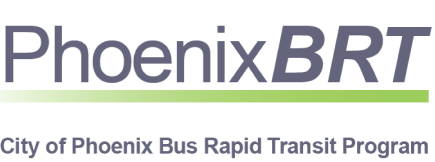So, What’s the Transit Analysis Process?
From demographics to ridership data, learn how we analyze local transit data to help identify BRT corridors.

Matthew Taunton
Hi, let me introduce myself! My name is Matthew Taunton and I’m a transit planner with the Phoenix Bus Rapid Transit (BRT) team. What does a transit planner do exactly? Well, I work on transit planning projects such as transit corridor studies, transit operations, and transit infrastructure in the Valley. There is a lot of exciting transit work going on as part of the City of Phoenix Transportation 2050 (T2050) Program, and I’m going to describe how we identified 35th Avenue/Van Buren Street as the first BRT corridor in Phoenix!
In order to gain helpful information about what corridor(s) could be successful BRT routes, we first studied data showing “ridership by segment.” We looked at bus routes that had the highest combined average daily ridership. Then, we organized those results into one-mile segments, identifying which segments have the highest local bus ridership. The segments with the highest local bus ridership are typically on routes with higher frequency (meaning buses arrive at stops within shorter amounts of time), and these routes often connect with light rail or other frequent bus service, such as RAPID or Express bus.
One question that we received throughout this process was, “What has changed in terms of ridership due to COVID?” We conducted the same transit analysis using data gathered during COVID, and while the total systemwide ridership is down, the trends remain very much the same within our previously identified segments.
We also evaluated “transit propensity” which looks at demographic and socioeconomic characteristics that may show higher potential demand for transit. These characteristics are pulled from U.S. Census and American Community Survey data and include things like population, employment, low income households, minority populations, persons with disabilities, zero car households, and persons under 18 or over 64 years. We mapped these characteristics individually on a map of Phoenix and then layered the maps on top of each other to show a combination of all these characteristics together. This allowed us to see areas that had most of these characteristis and therefore have higher potential for current and future transit demand.
When we combined ridership by segment with transit propensity, we saw that most of the higher ridership segments are also the areas of the highest transit propensity. This is a good thing, as it shows that the current local bus service in Phoenix is serving the areas with the highest potential demand. Using this data, we were able to identify potential BRT corridor options (six) and then prepare ridership estimates for each of the options.
Throughout this process, we provided information to and collected input from the community – that’s you! Ultimately, based on your input and results from our analysis, we were able to identify 35th Avenue/Van Buren Street as the first BRT corridor as it provides high ridership, good geographic coverage, and connects the existing and future transit networks in Phoenix (particularly future light rail extensions in Phoenix).

